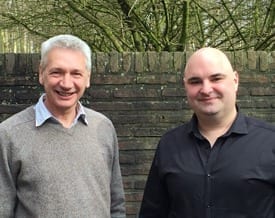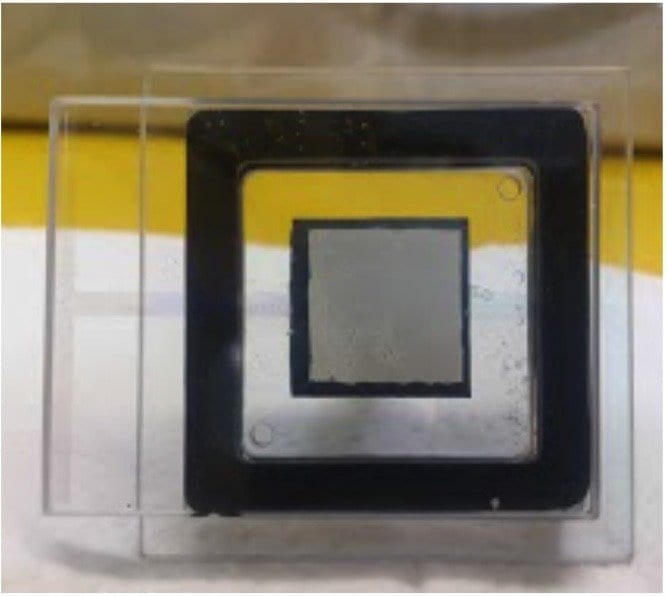
Brain-computer interface (BCI) devices have proven to be effective in helping patients with amyotrophic lateral sclerosis (ALS) communicate during advanced stages of the disease when complete paralysis takes over the body.
Now, a researcher at East Tennessee State University has shown that the device can also be beneficial to patients who have suffered a brainstem stroke and are experiencing “locked-in” syndrome and have no ability to communicate with the outside world.
The study, led by Dr. Eric Sellers, an associate professor of Psychology in ETSU’s College of Arts and Sciences, appears in the current issue of Science Translational Medicine, which published Wednesday.
According to Sellers, the BCI can record brain activity using small sensors placed on the scalp. In his research work, Sellers used the BCI to detect a common brain response called the P300, which is a positive spike in the brainwaves that occurs about 300 milliseconds after the brain has detected a meaningful stimulus.
The P300 becomes a “virtual finger” for a typing device, and patients are instructed to pay attention to a specific “key” in a grid that represents a computer keyboard. The BCI randomly flashes letters and numbers at a rapid rate, and the person pays attention to the key they want to select. When that item flashes, a P300 occurs and a computer screen displays the words and sentences the patients are trying to communicate.
“We have significant research showing that BCI is beneficial to ALS patients, but until now there were no studies that looked specifically at patients with a brainstem stroke to see if it worked for them as well,” Sellers said.
Sellers’ article in Science Translational Medicine detailed a 13-month studying involving a patient who had suffered a brainstem stroke and was experiencing locked-in syndrome. The patient was able to successfully operate the BCI system during 40 of 62 sessions and could spell words accurately and also initiate dialogue with family members.
The Latest on: Brain computer interface
[google_news title=”” keyword=”Brain computer interface” num_posts=”10″ blurb_length=”0″ show_thumb=”left”]
via Google News
The Latest on: Brain computer interface
- Elon Musk backed Neuralink hits big milestone, implanted brain chip completes 100 dayson May 8, 2024 at 11:42 pm
Neuralink said in a separate blog post that the aim of the ‘PRIME’ study is to demonstrate that the brain chip is safe and useful in daily life.
- 1St Human Implanted With Neuralink Brain Chip Completes 100 Days: Muskon May 8, 2024 at 11:27 pm
Elon Musk on Thursday said his brain-computer interface company Neuralink has achieved 100 successful days with the first hum ...
- Brain-computer interface translates ALS patient's brain activity into spoken wordson May 8, 2024 at 10:22 pm
Researchers successfully used a brain-computer interface to synthesize speech directly from brain activity in an ALS patient, achieving 80% word recognition accuracy by listeners, showcasing the ...
- Neuralink Patient's Implants Slipped Out, But He Still Set a Brain Control Recordon May 8, 2024 at 6:18 pm
Embracing his love of gaming, Noland Arbaugh overcame technical setbacks to achieve unprecedented brain-computer interface control.
- Neuralink's first in-human brain implant has experienced a problem, company sayson May 8, 2024 at 5:47 pm
Neuralink on Wednesday said part of its brain implant malfunctioned in the weeks following its first in-human procedure. The company has built a brain-computer interface that could help patients with ...
- Neuralink’s First Brain-Chip Implant in a Human Appeared Flawless. There Was a Problem.on May 8, 2024 at 2:51 pm
The amount of data captured from the device declined, although the patient and the Elon Musk-owned company still staged a successful demonstration.
- ArdEEG Lowers The Cost Of Brain-Computer Interfaceson May 7, 2024 at 5:00 pm
Considering the incredible potential offered by brain-computer interfaces (BCIs), it’s no wonder there are so many companies scrambling to make their mark in the field. Some see it as an assistive ...
- Neurable raises $13M for brain-computer interface with everyday productson May 7, 2024 at 11:00 am
Neurable raised $13 million for its brain-computer interface (BCI) technology that can work with everyday products.
- AI Deep Learning Improves Brain-Computer Interface Performanceon May 6, 2024 at 8:54 am
AI deep learning powers a brain-computer interface that enables humans to continuously control a cursor using thoughts.
- New Non-Invasive Brain-Computer Interface Enables Thought-Controlled Object Manipulationon May 5, 2024 at 8:50 pm
Researchers have showcased noninvasive BCIs in their recent study, offering a promising alternative with enhanced safety, affordability, scalability, and accessibility for a broader demographic.
via Bing News










